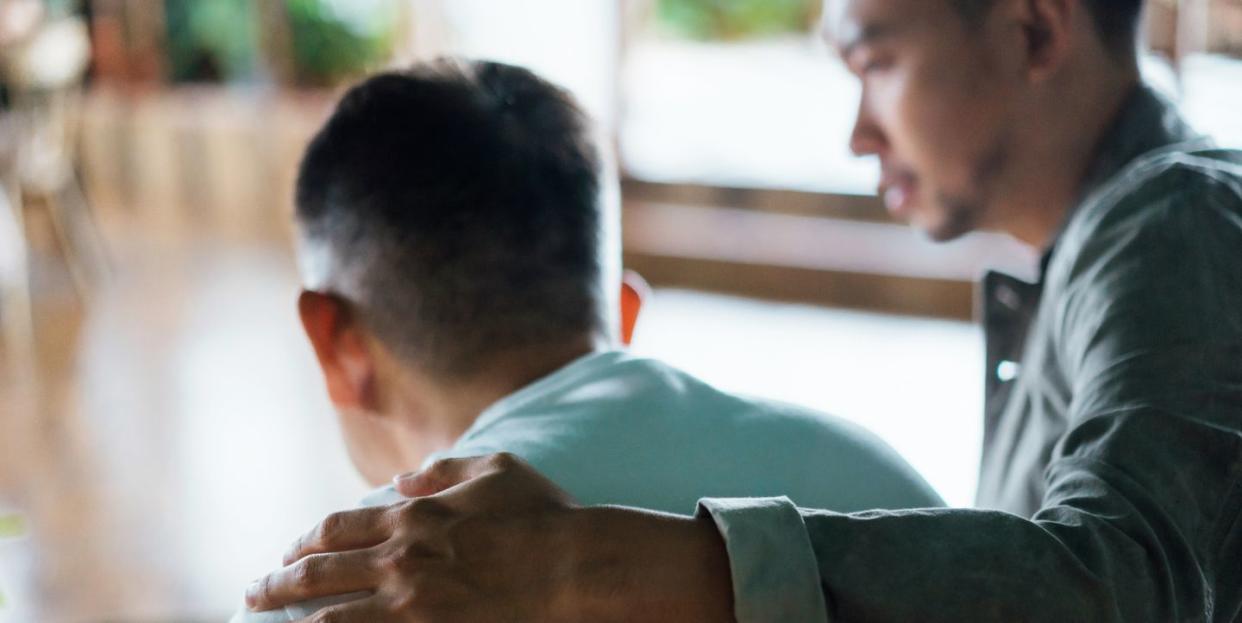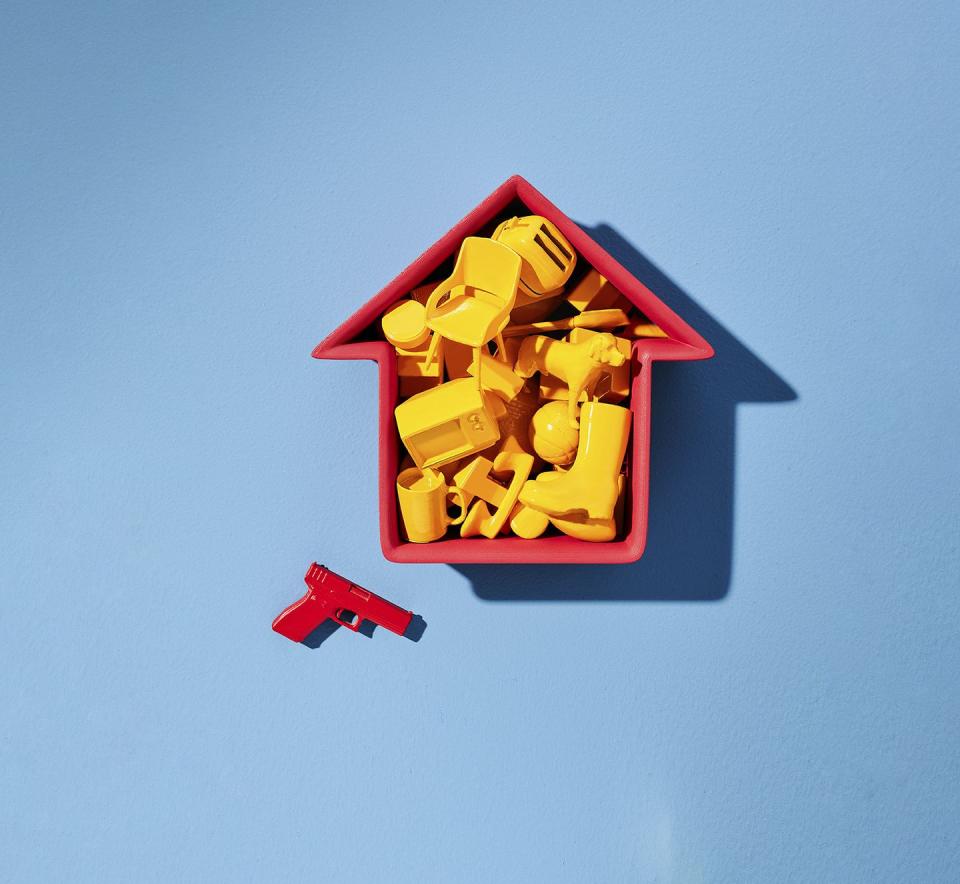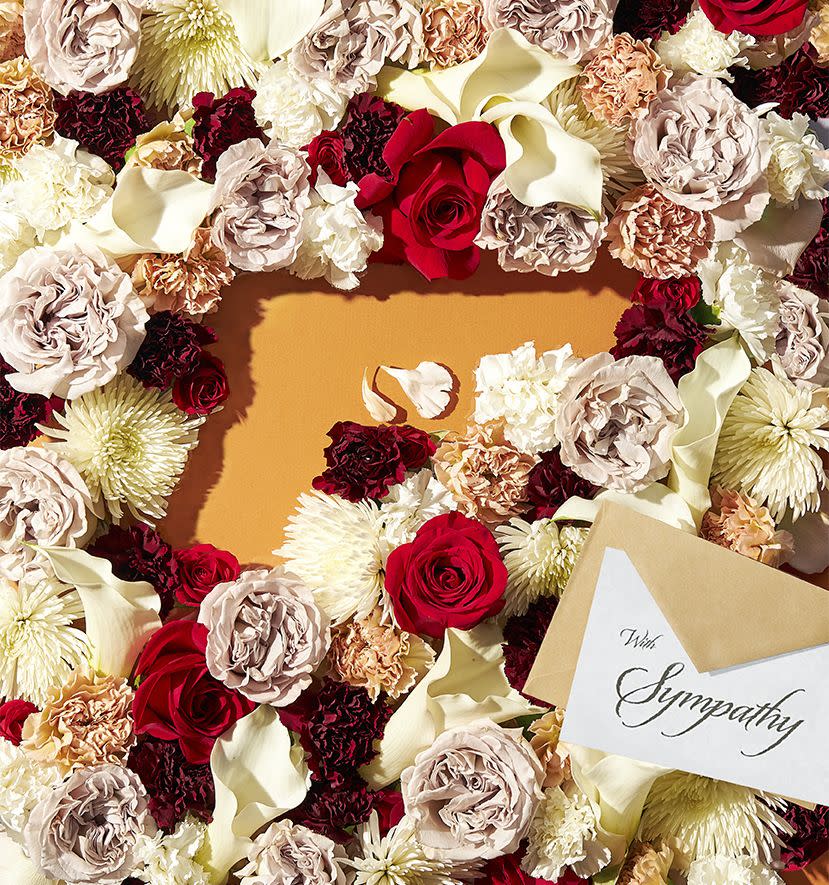For Suicide Prevention Month, We Need to Be Talking About Guns

"Hearst Magazines and Yahoo may earn commission or revenue on some items through the links below."
When Gwen La Croix thinks about her son Jonah, she remembers her creative child always drawing his favorite character, Sonic the Hedgehog. She recalls how he adored pickup basketball, especially as a six-foot-two teenager. And she marvels at how well he seemed to be doing, starting an early college program while still in high school.
But her memory of one autumn night in 2016 is always top of mind. That’s when she and Jonah, then 17, got into a disagreement about politics that escalated. Since second grade, Jonah had struggled with mental health issues for which he had seen several psychiatrists over the years, and for which he was hospitalized twice. When their argument finally ended, Gwen assumed Jonah went out walking—something he regularly did to calm down. With her husband still at work, Gwen took her younger children and live-in mother-in-law out of the house to run an errand.
While they were gone, Jonah, who turned out to have stayed in his bedroom, retrieved his father’s handgun from a hall dresser drawer and killed himself.
If you or someone you know is considering suicide, please contact the National Suicide Prevention Lifeline by calling 988, texting “STRENGTH” to the Crisis Text Line at 741-741, or going to 988Lifeline.org
In the swirl of a busy life, Gwen, a 47-year-old psychiatric nurse practitioner in Milan, MI, simply hadn’t realized that after the family moved to their new home that summer, the gun, along with more than half-dozen others in her husband’s collection, were no longer properly secured in lockers. “I had no idea the gun was in that drawer,” she says. Obviously, Jonah did. The tragedy ultimately broke up Gwen’s marriage and sparked a mental-health crisis for her other son, age six at the time. “The fallout is awful, and it continues,” Gwen says now.
When we think of firearm tragedies, it’s often the mass shootings and crime-related homicides that fill the evening news. But the largest number of firearm deaths—some six out of every ten fatalities—come via suicide, and the number is growing. Gun suicides now kill nearly 24,000 Americans each year (an average of 64 every day!), according to the advocacy and education group Everytown for Gun Safety, up 12% from a decade earlier. Worse, gun suicides in young people are up a startling 53% in that time frame.
And no statistic can convey the anguish of people like Gwen, who pours her grief into volunteering with the Michigan chapter of Moms Demand Action, a grassroots gun safety movement, and consoling other surviving moms through her work. “Being a survivor of gun suicide often leaves long-term physical, emotional, and social trauma that can alter the physical and mental health, choices, and lifelong trajectory” of everyone left behind,” says Sarah Burd-Sharps, the senior research director at Everytown for Gun Safety (Everytown’s grassroots network includes Moms Demand Action).
What we still need to learn about suicide
A key reason this type of gun death is often overlooked in the discourse around curbing the epidemic of gun violence is the misconceptions many people have about gun suicides, says Matthew Miller, M.D., a professor of health sciences and epidemiology at Boston’s Northeastern University and a researcher in the field. For example, gun safety arguments are often countered with the idea that someone who wants to kill themselves will doggedly find a way to do it, if not with a gun than some other means. Yet studies don’t bear this out, Miller says. “When you look at the data, it turns out people do not substitute another equally lethal method when they can’t get a gun,” he says. This makes sense based on what experts know about what triggers a desperation large enough to want to end a life.
A person who is suffering deep psychological pain may ponder suicide for months or years—but only when they have a heightened emotional crisis that renders them blind to other solutions do they take action, explains Janel Cubbage, M.S., a licensed clinical professional counselor in Baltimore and a program manager at the Johns Hopkins Center for Gun Violence Solutions. This type of crisis typically lasts just a few minutes and is almost always under an hour. “The crisis state is brief, but it is very powerful,” Cubbage says. If the person cannot access a firearm during that limited mental emergency, their life will likely be saved.
Even if a person does turn to a firearm alternative, attempts with many other methods are far less likely to prove fatal, Dr. Miller says. “Guns rarely give you a second chance; many other commonly used methods do,” says Dr. Miller.
But that second chance turns out to be extremely important to the person attempting suicide. Cubbage points to studies showing the vast majority of people who survive an attempt to end their lives do not later go on to kill themselves, likely because once their emotional crisis passes, they realize they want to live.
What can keep people safe?
Another widely held misconception: Having a gun in the home keeps its residents safe. Many people keep a loaded weapon handy to protect against home invaders, but don’t realize the danger that keeping a firearm in their home poses to the very people they bought the gun to protect, Dr. Miller says. In his survey of a nationally representative panel of nearly 4,000 Americans, only 15% agree that having a firearm in the home increases suicide risk. (Among gun owners, only 6% do).

Yet a systematic review of 16 studies concludes that access to a home firearm triples the risk of a completed suicide. Women who live in homes with guns are at substantially higher risk of dying by suicide even if they don’t own the gun themselves. Another of Miller’s studies found that when a woman’s partner brings a gun into the home her risk of eventually dying by suicide goes up more than 40% because her risk of dying by a firearm suicide goes up by more than 400%—an underappreciated “secondhand exposure” with fatal consequences for some, like smoking, Dr. Miller says. “I understand that people want to have that sense of security. But having quick access to a gun doesn’t outweigh the considerable risks,” Cubbage says.
Barbara Legere is haunted by the knowledge that she bought the gun that took her son’s life. Although she lives in a safe neighborhood in Mission Viejo, CA, the 63-year-old single mom liked the sense of safety her gun gave her. Having grown up in a family where shooting is a bonding sport, Barbara also owned several rifles, and introduced her son Keven to them at a young age so they could target shoot together. Even when Keven struggled with depression and anxiety and, once in high school, developed an addiction to heroin and later meth, Barbara felt sure that the respect for firearms that she instilled in him would keep him safe—another common myth, experts say.
And Keven desperately wanted to end his addiction, so during his 20s, Barbara and her mother went into considerable debt paying for multiple courses of rehab. Keven had tried to kill himself by intentionally overdosing several times, but he’d told her outright that he was afraid to use a gun to end his life.
Then one morning in August 2020, when he was 29, Barbara heard Keven crying in his room. She went in and hugged him. “I gave him my usual talk, that I’m here for you, we’re a team, I love you,” she recalls. When he responded, “Mom, I don’t think I can ever stop using drugs,” Barbara continued to encourage him until he seemed to find some hope. She left the room and went downstairs. Fifteen minutes later she heard the shot.
Here’s who is at risk for gun suicide
Stereotypes about the types of people who kill themselves with a firearm paint too narrow a picture, according to an analysis published in BMJ Injury Prevention. Here are some facts:
While the biggest victims of gun suicides are indeed male, women are almost twice as likely to suffer from severe depression and are even more likely than men to try to kill themselves, according to the Giffords Law Center to Prevent Gun Violence.
Women who take their life by a firearm are likely to be married, a military veteran, experiencing depression, relationship problems, and/or the death of a relative or friend, the BMJ study found.
Men (who are much more likely to own a gun) account for 86 % of the nation’s gun suicides and 78 % of all suicide deaths, according to the Center. These men are overwhelmingly white: White Americans are twice as likely as Black people and Hispanic people to own a gun. Native Americans have the highest firearm suicide rate in proportion to their numbers.
And while older people are most prone to firearm suicide, according to the BMJ article, gun suicide among younger people is rising substantially, notes a new report by Everytown for Gun Safety. In fact, youth firearm suicide is at its highest rate in more than two decades, its thousands of annual fatalities making it the third leading cause of death for people ages 15 to 24, behind accidents and homicides.
But the most important factor in who uses a gun to take their own life is access—more so than mental health vulnerabilities or demographics. This is why people who live in states with high gun ownership are most prone to firearm suicides, having nearly twice the suicide fatalities as locales with lower ownership rates, the Giffords Center says. Why? Residents of those states don’t actually attempt suicide more often (in fact, they do so slightly less often). It is because guns are deadly accurate.

Making it harder for someone having a mental crisis to easily reach for a firearm is the most important way to save these lives, Cubbage says. This adding of friction has been shown to be effective in other arenas. In United Kingdom in the 1990s, there was an epidemic of suicides from acetaminophen overdoses, which prompted a new law mandating blister-pack packaging, rather than all those loose pills in a bottle. Suicide deaths plummeted as a result. “Having to punch out the number of pills needed to kill yourself takes time, and during that time the crisis can revert,” she says. “Time and space really are important and effective.”
How to help someone you love
The final misconception, and one of the most enduring, is that people considering suicide always tip their hand in a way that gives friends and relatives time to act. Unfortunately, that isn’t so. And while some do take actions that make their suicide ideation public—such as withdrawing from social life, drafting a will, and/or making preparations for beloved pets—most of us are clueless about how to intervene. “We miss the cues, or maybe we think they’re just going through a hard time, says Cubbage. “Or perhaps we do worry about suicide but we don’t know what to do,” she says. One important new way we can assist: Dialing the new 988 phone number to instantly connect to experts at the National Suicide & Crisis Lifeline.
Red flag laws, which enables people to petition to have a gun taken away from someone in crisis, can also help, but only if you take advantage of them. Adriana Pentz, a 41-year-old head of operations for a women’s wellness company in New York, wasn’t aware that Connecticut had one in 2017, when her brother Luc shot himself there at age 30. Adriana’s family was well aware of Luc’s struggles with addiction and mental health issues. When Adriana confronted him about his legal gun purchase a year before he died, he said he wanted it for security. But when Luc used the gun, he shattered his formerly close-knit family. “There’s a heaviness now that makes it impossible to come together and connect the way we used to,” she says.
Since her son’s death, Barbara works to help other parents deal with addiction and suicide grief, including by writing the book Keven’s Choice. She now advocates for stronger gun laws, something she’d resisted before, including preventing those with mental-health challenges from buying a firearm. Gwen, too, is an advocate. “I may not have been able to save Jonah, but at least I feel I’m able to help some other people’s kids,” she says.
What you can do about gun safety
Experts say both individual actions and targeted public policies can make a difference.
Lock up guns—every time—if you have them. Gwen La Croix wishes she had interrogated her then-husband about this. “I was always afraid to get into a fight. But I wish I had done an inventory of every gun and where it was,” she says. Ammunition should also be stored separately in a secure location.
Talk to someone you’re concerned about when they’re not in an acute crisis. You can offer them lock box to keep in their home to which only you or another outsider have the key.
Ask more from your representatives. Demand that federal and state politicians pass legislation to establish background checks on all gun sales, waiting periods, and red-flag laws. Days-long waiting periods are also key. “This creates a buffer between someone having a suicidal crisis and having access to a gun, which can be the difference between life and death,” Everytown’s Sarah Burd-Sharps says. Volunteer gun relinquishment programs can also save lives. These allow people who recognize they’re a danger to themselves or others to voluntary place themselves on a list to prevent a gun purchases.
Vote for candidates who see the bigger picture. Even with additional funds from the new federal gun law, there isn’t nearly enough mental-health and substance-use help for all who need it, Cubbage says. And promoting mental wellness must address upstream risk factors like affordable housing, criminal justice reform, and a livable minimum wage. “When there’s a hopelessness that your life conditions won’t change, that can create the desire for suicide,” she says.
You Might Also Like


